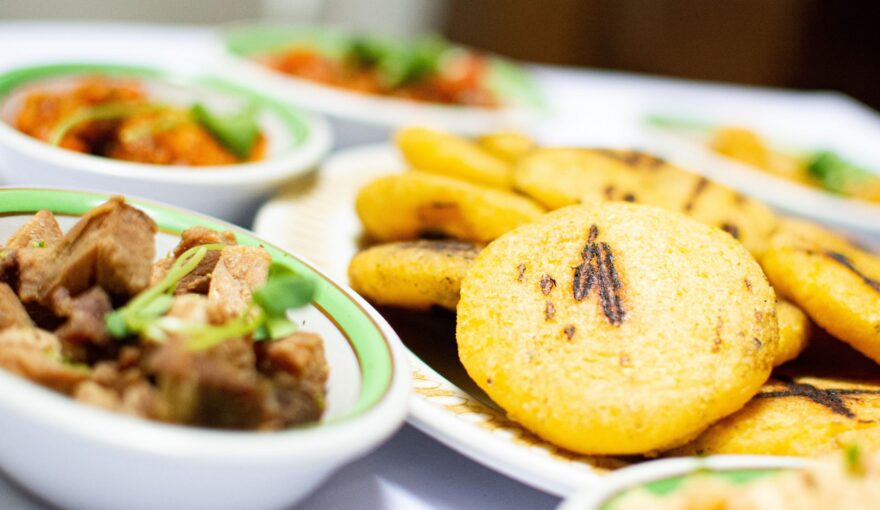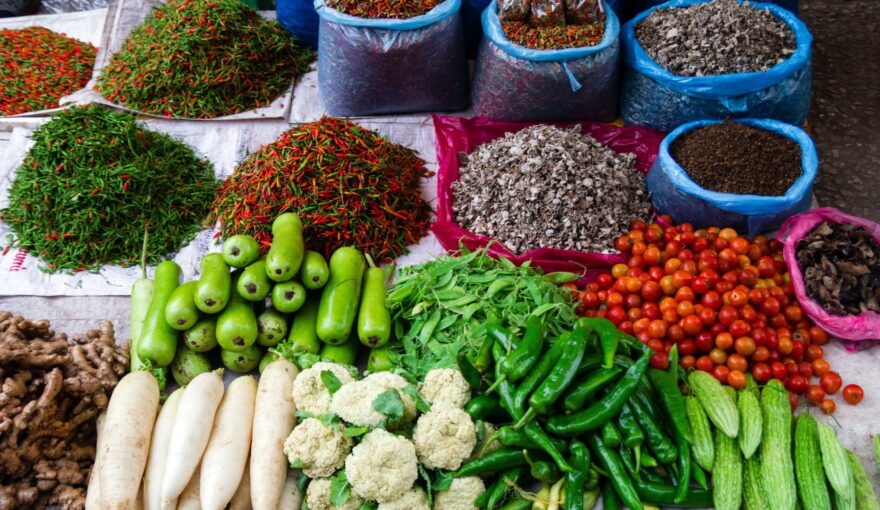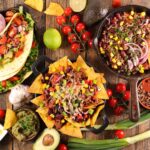The myths and legends behind some iconic Latin American dishes: stories that enrich our culinary history
Latin American cuisine is a treasure trove of flavors, aromas, and traditions that have been passed down from generation to generation. Beyond the ingredients and culinary techniques, many of our recipes carry stories, myths, and legends that give a profound and magical meaning to each bite. At Azúcar Restaurant, we celebrate this cultural richness, and today we invite you to discover some fascinating stories that enrich the history of our region’s iconic dishes.
The legend of tacos al pastor and the origin of the “pita stone”
Although tacos al pastor are a symbol of Mexican cuisine, a legend tells us that their origin dates back to the influence of Lebanese immigrants in Mexico. It is said that the first vendors began preparing meat on vertical spits, similar to shawarma. Popular history tells of a volcanic stone called “pita stone” that was used in the earliest times to cook meat, giving rise to the technique we know today. It is said that the stone had an almost mystical quality, as when heated, it was believed to transmit positive energy and protection to those who used it. Legend has it that this stone was a gift from an elderly Lebanese man to a Mexican chef, and that its power lay in keeping the meat juicy and full of flavor, as well as bringing good luck to its user. Although volcanic stones are currently used for their thermal properties, this story adds a magical touch to the preparation of the iconic taco al pastor.
The History of the Venezuelan Arepa and the Spirit of the Earth
In Venezuela, the arepa is much more than a simple cornbread; it is a symbol of identity, unity, and connection to the earth. According to an indigenous legend, arepas were created by a goddess named Yara, who protected the indigenous peoples. It is said that Yara, in her desire for her people to have nutritious and easy-to-prepare food, transformed corn into a mystical dough that could be cooked in any home and on any occasion. Legend tells that Yara blew on the corn, infusing it with life and energy, and that those who ate arepas in her honor received protection and good fortune. The story also tells that, in ancient times, arepas had the ability to unite communities, as their preparation and consumption fostered collaboration and collective celebration. Thus, every time we bite into an arepa, we are honoring the ancestral history of the land and its gods.
The Legend of Peruvian Locro and the Spirit of Independence
Peruvian locro, a hearty stew of corn, squash, and meat, has a history intertwined with Peru’s struggle for independence. Legend tells that during the colonial era, a brave warrior named Tupac was inspired by the land and his people to prepare a dish that would strengthen the spirit of freedom. It is said that Tupac, on his secret mission, cooked a thick broth with ingredients from the land, and that in the process, a mystical figure appeared at his campfire: a wise old man who gave him the recipe as a symbol of resistance and unity. Since then, locro has become a symbol of Peruvian identity and a dish that commemorates the struggle for freedom. Legend suggests that each spoonful of locro carries within it the energy of resistance and national pride.
The Magic of Ceviche and the Wind of Coastal Legends
Ceviche, one of the most emblematic dishes of the Latin American coast, has stories that speak of its magical origins. In Peru, ceviche is said to have been inspired by the sea goddess Yacumama, who protected fishermen and coastal communities. According to legend, Yacumama sent gentle winds that helped fishermen catch the best fish, and these winds transformed into the breeze that, when combined with lemons and herbs, gave rise to the ceviche recipe. It is said that, in ancient times, the preparation of ceviche was a ritual dedicated to the goddess, in which the first fish of the day were offered to her as a sign of gratitude and protection. In this way, this dish is not only a meal, but an act of respect and connection with the forces of the sea.
At Azúcar Restaurant, each dish we serve carries not only quality ingredients but also the magic and stories that make our culture unique. From traditional flavors to the legends that accompany them, we invite each diner to discover and celebrate the richness of our Latin American roots in every bite.
For more stories, recipes, and culture, visit us at azucarrestaurantmd.com
Come and experience the journey of Latin American gastronomy with us!







